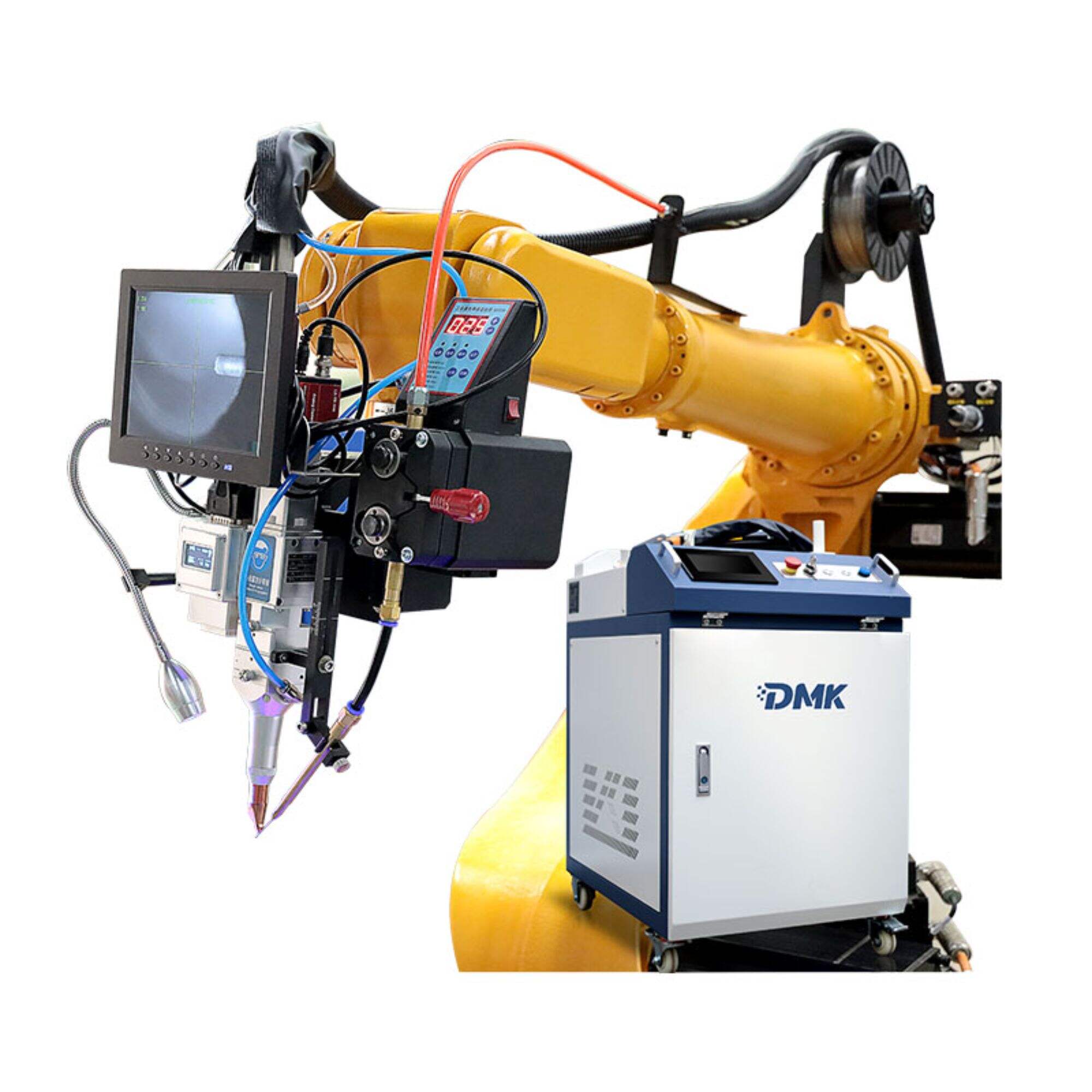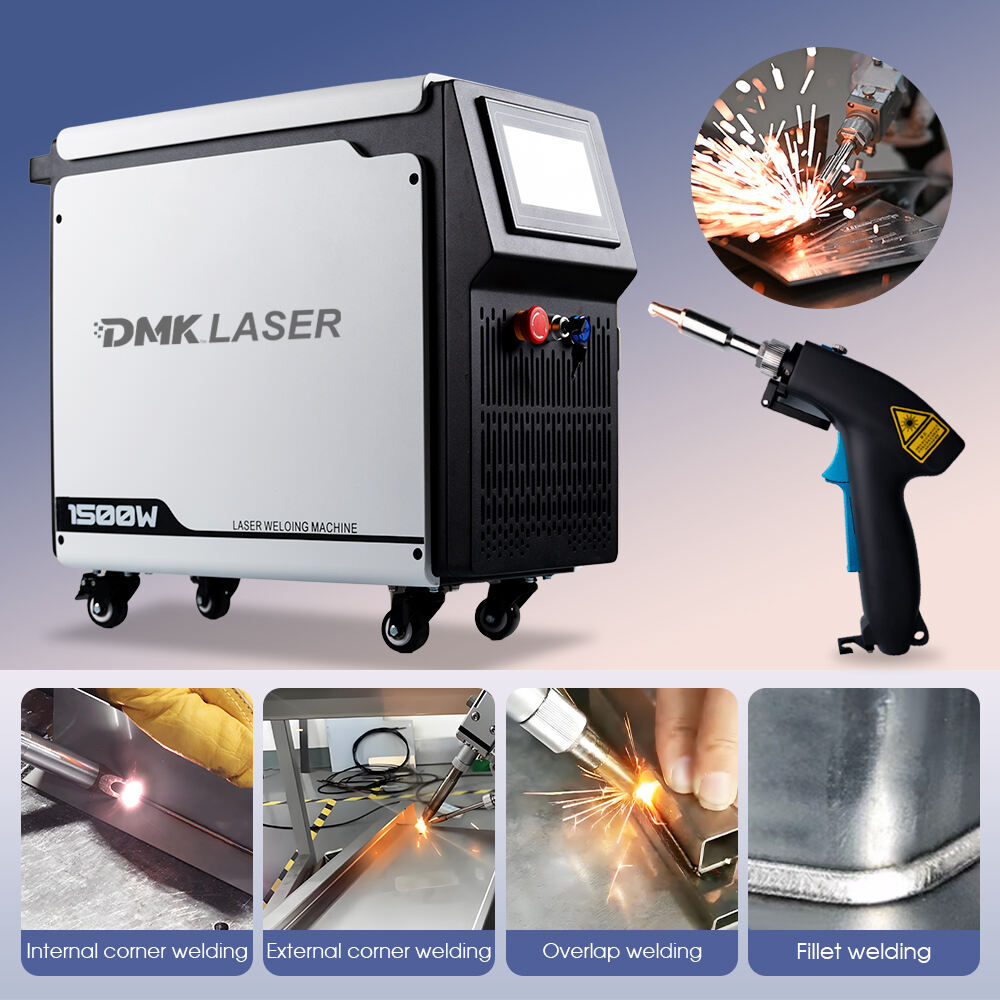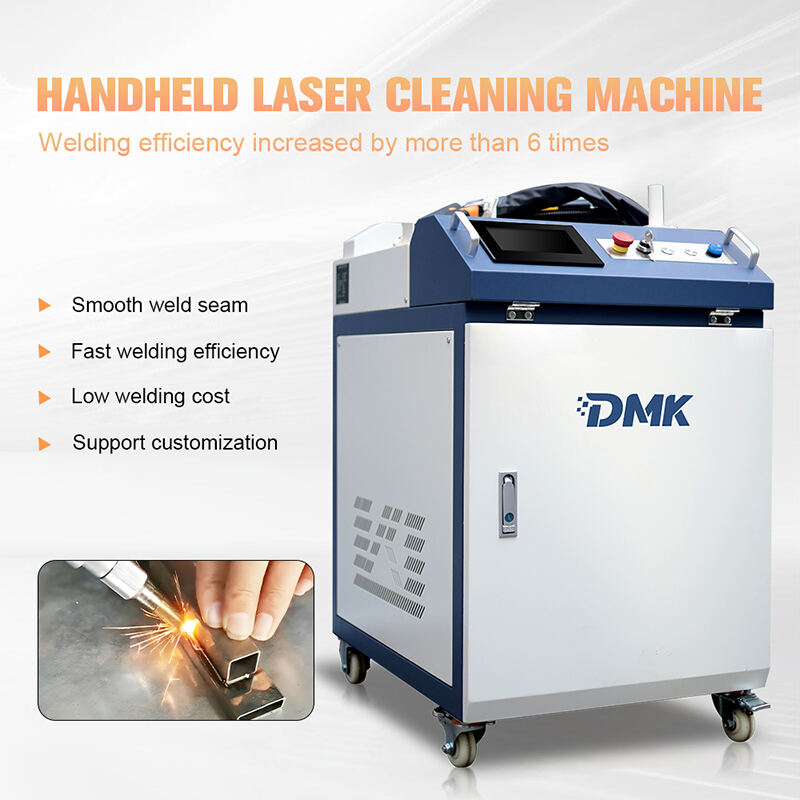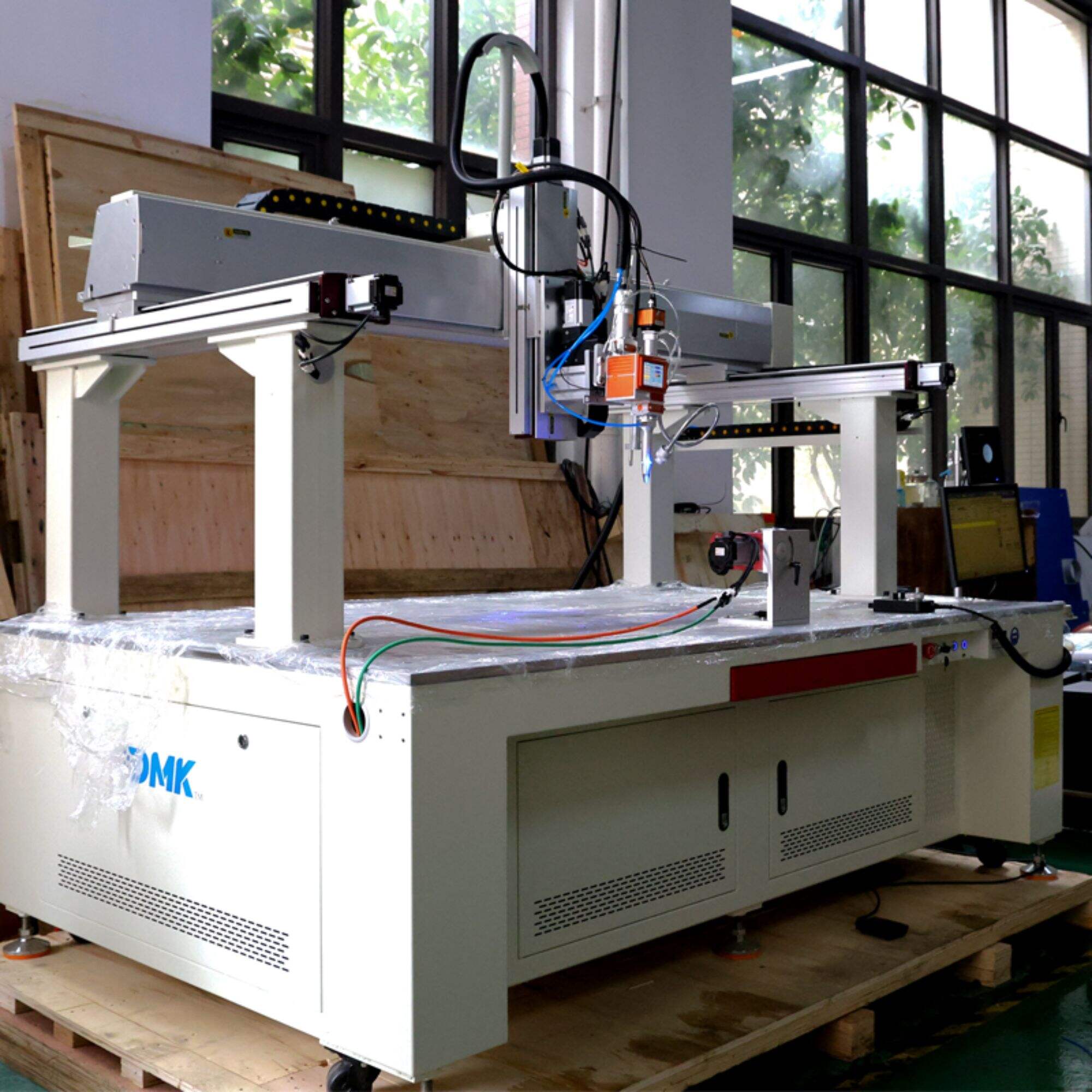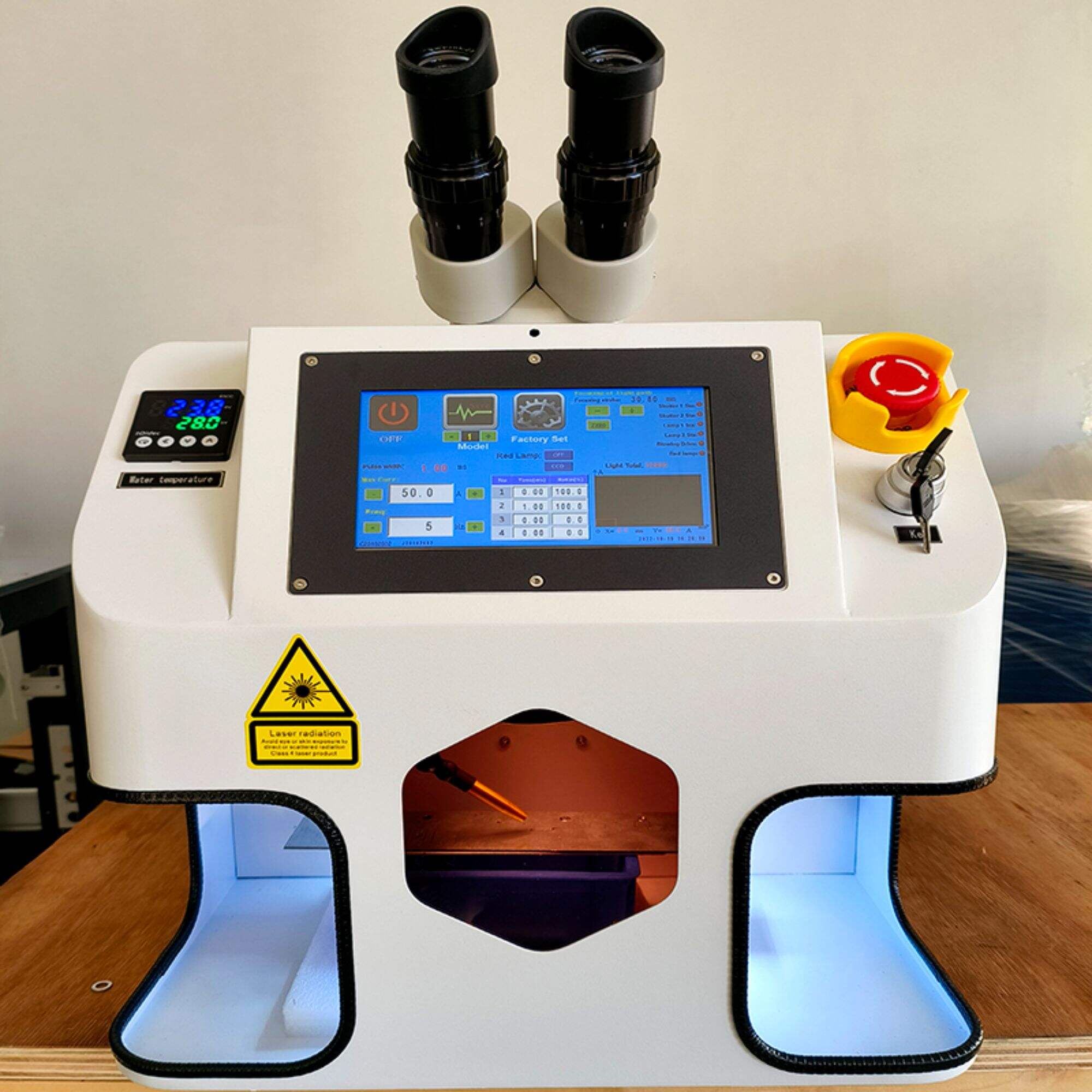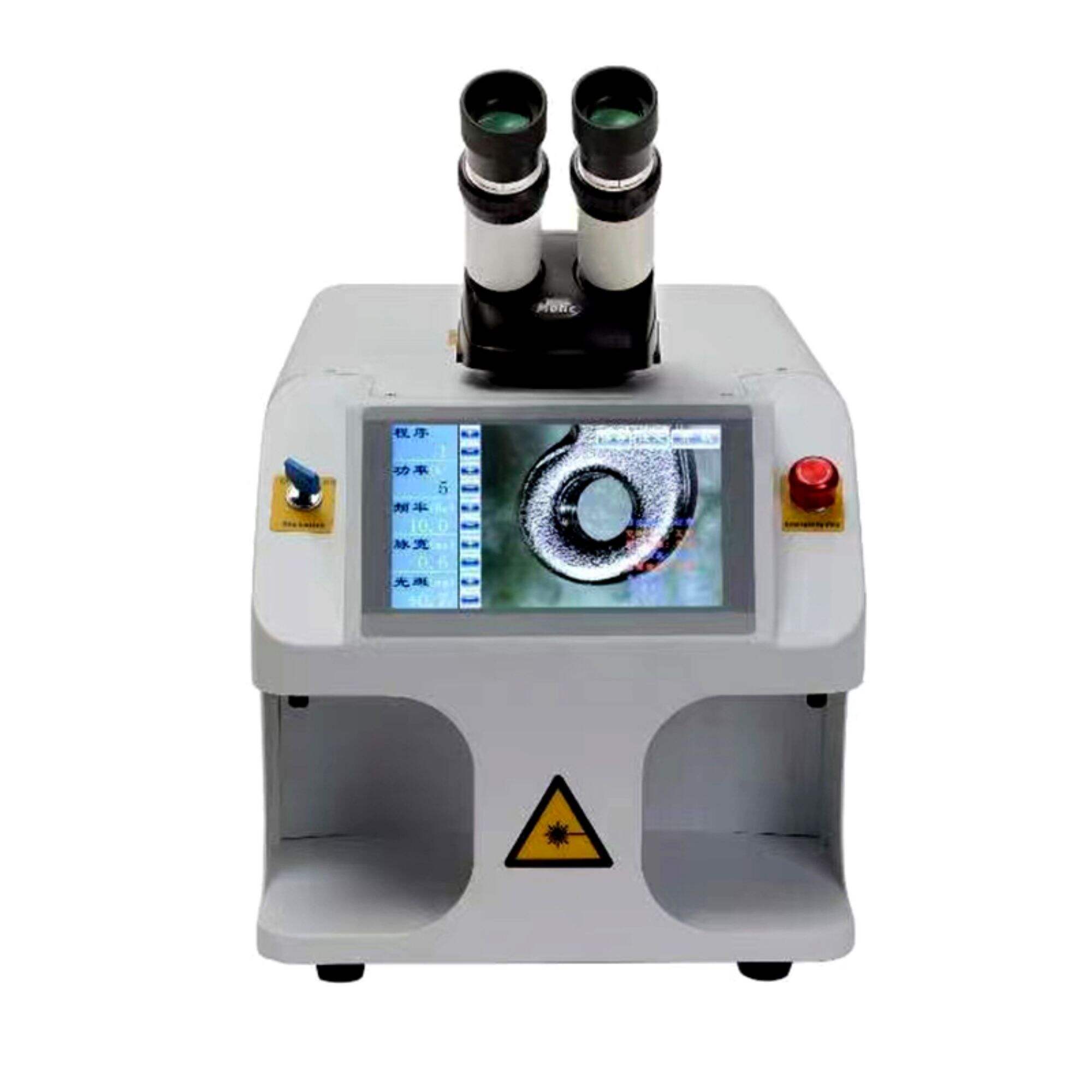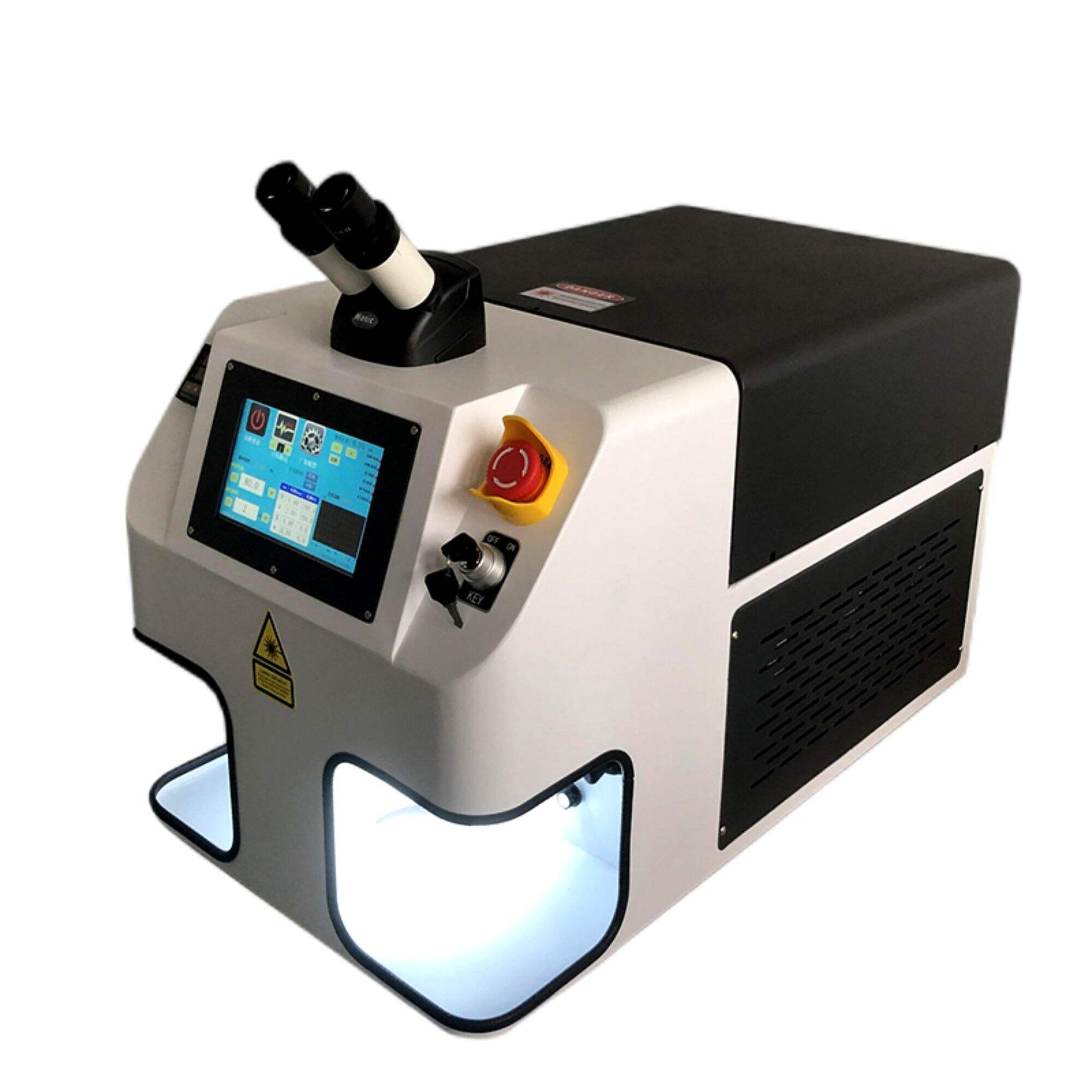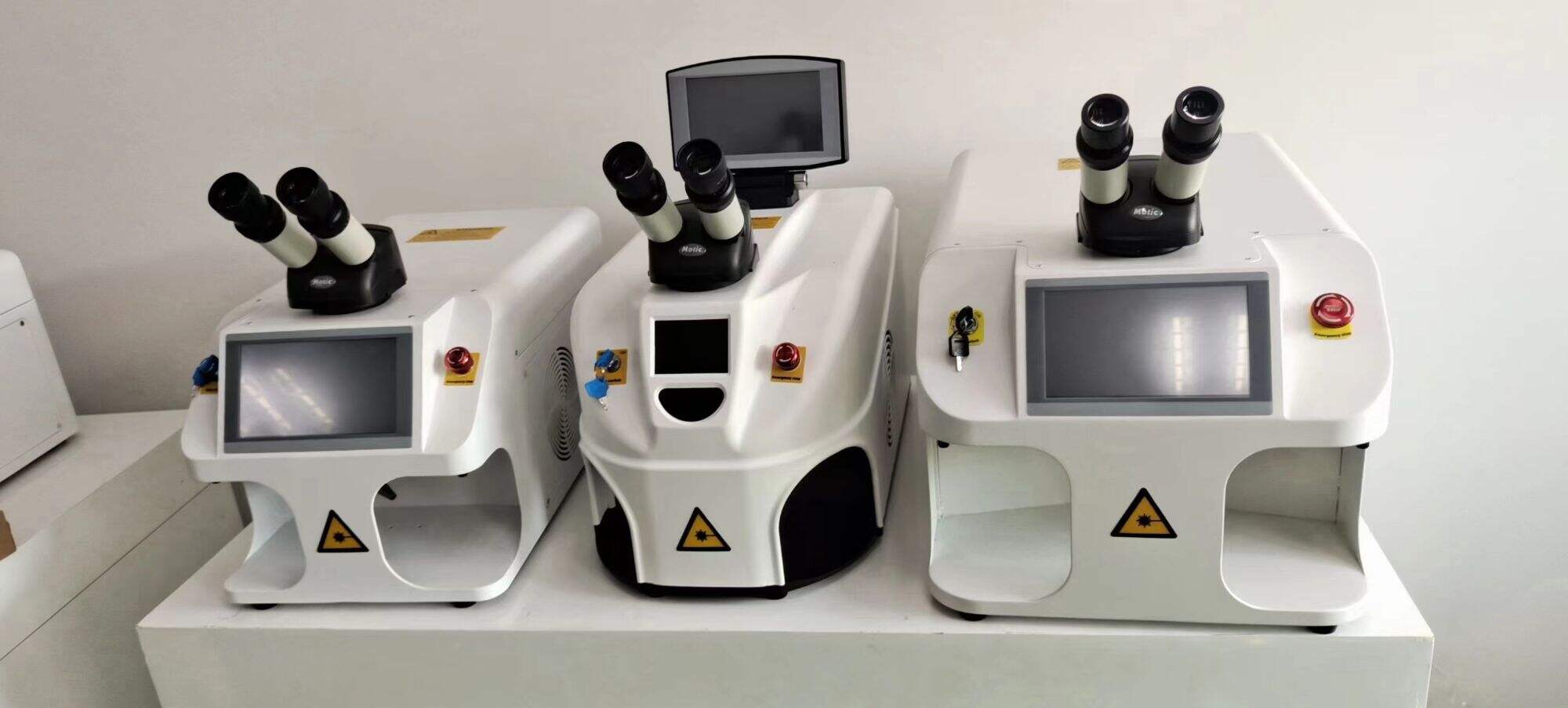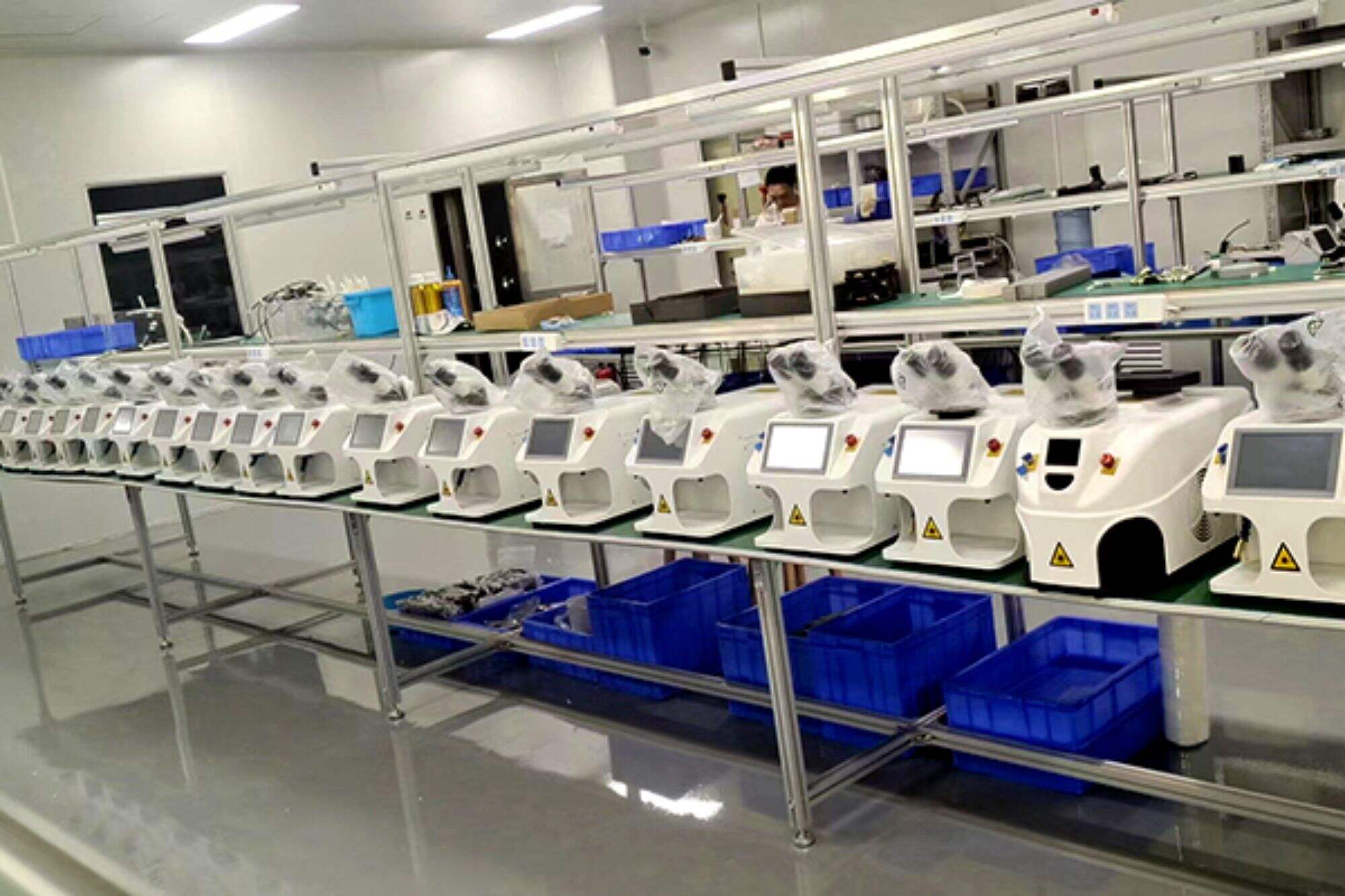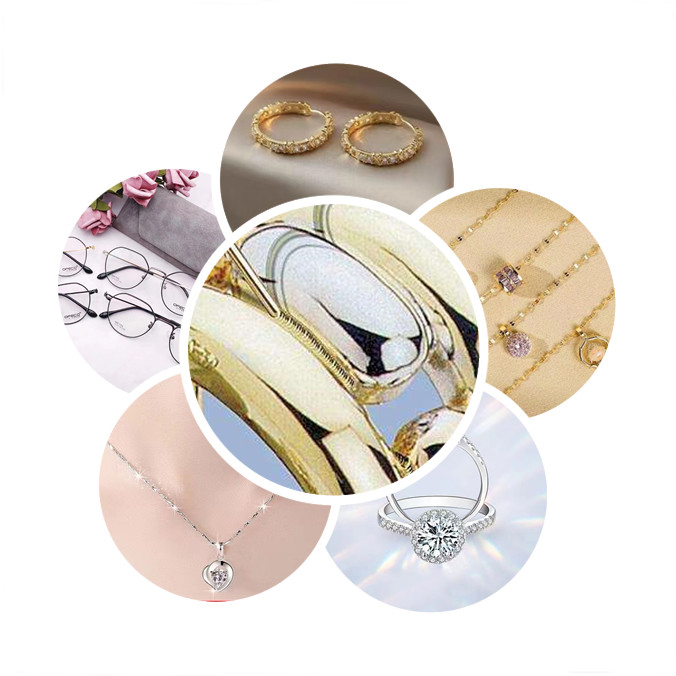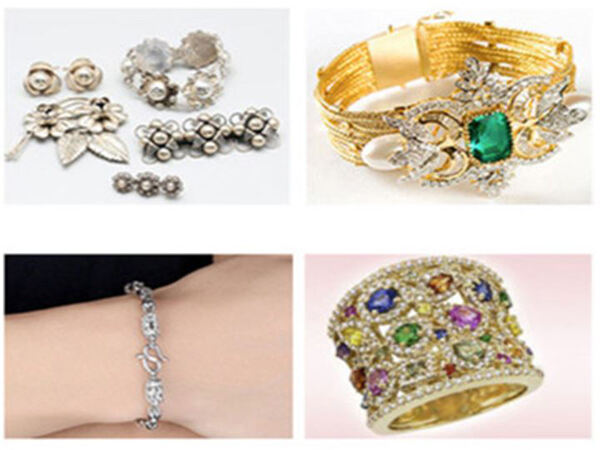YAG Jewelry Laser Spot Welding Machine
Product Description
Jewelry laser spot welding machine is a laser equipment professionally used for welding in the metal jewelry industry. It is mainly used for filling holes, spot welding and repairing gold, silver, stainless steel, titanium alloy and other alloy jewelry. It has the advantages of high precision, low loss, super-fast speed and so on. The new built-in water-cooled vertical jewelry welding machine has a more compact structure and an automatic water addition function, which is easier to operate.
For More Details
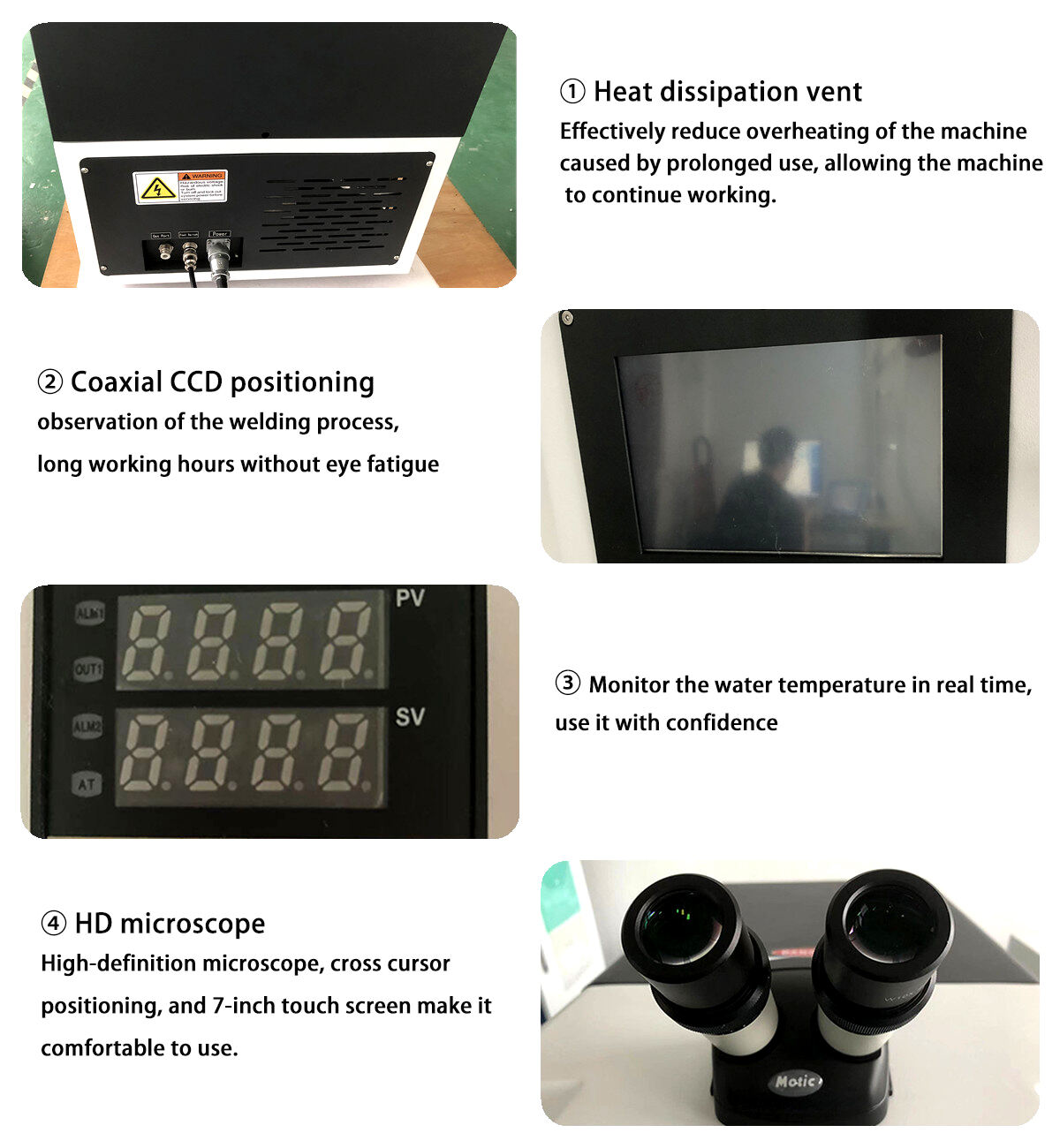
Specification
| Model | DHH-100 | DHH-150 |
| Laser Power | 100W | 150W |
| Equipment style | Desktop model laser spot welder | Desktop model laser spot welder |
| Laser Wavelength | YAG /1064nm | YAG /1064nm |
| Pulse Width | ≤15ms | ≤15ms |
| Pulse Frequency | ≤100Hz | ≤100Hz |
|
Welding Spot Diameter |
0.2-2mm |
0.2-2mm |
| Filler Wire Diameter | 0.1~0.5mm | 0.1~0.5mm |
| Power Consumption |
2KW-7A |
3KW-10A |
|
Power Supply |
AC220V±5% single phase | AC220V±5% single phase |
| Operation Interface |
LED touch control interface,Chinese/English available |
LED touch control interface,Chinese/English available |
| Locating System | CCD /Coaxial CCD for microscope(10X) | CCD /Coaxial CCD for microscope(10X) |
|
Cooling Type |
water cooling |
water cooling |
| Machine Dimensions |
790*430*590mm |
790*430*590mm |
| Machine Net weight | 65KG | 65KG |
| Work Environment | Temperature 0~35ºC, Humidity 5~85% | Temperature 0~35ºC, Humidity 5~85% |
Performance
1.The energy, pulse width, frequency and spot size can be adjusted over a wide range to achieve a wide range of welding results. Parameters are adjusted by the control lever in the closed cavity, simple and efficient.
2.Adopts UK imported ceramic spotting cavity, corrosion resistant, high temperature resistant, high photoelectric conversion efficiency, spotting cavity life (8-10 years), xenon lamp life over 8 million times.
3.Adopts the world's most advanced automatic shading system, eliminating the stimulation of the eyes during working hours.
4.10X microscope magnification, cross cursor indication and high speed liquid crystal light valve automatic shading, synchronized with the laser.
5.Protective gas output to ensure aesthetically pleasing solder joints and no oxidation or discolouration of solder joints.
6.With 24 hours continuous working capacity, the whole machine has stable working performance, maintenance-free within 10000 hours.
7.Humanized design, ergonomic, long working hours without fatigue.
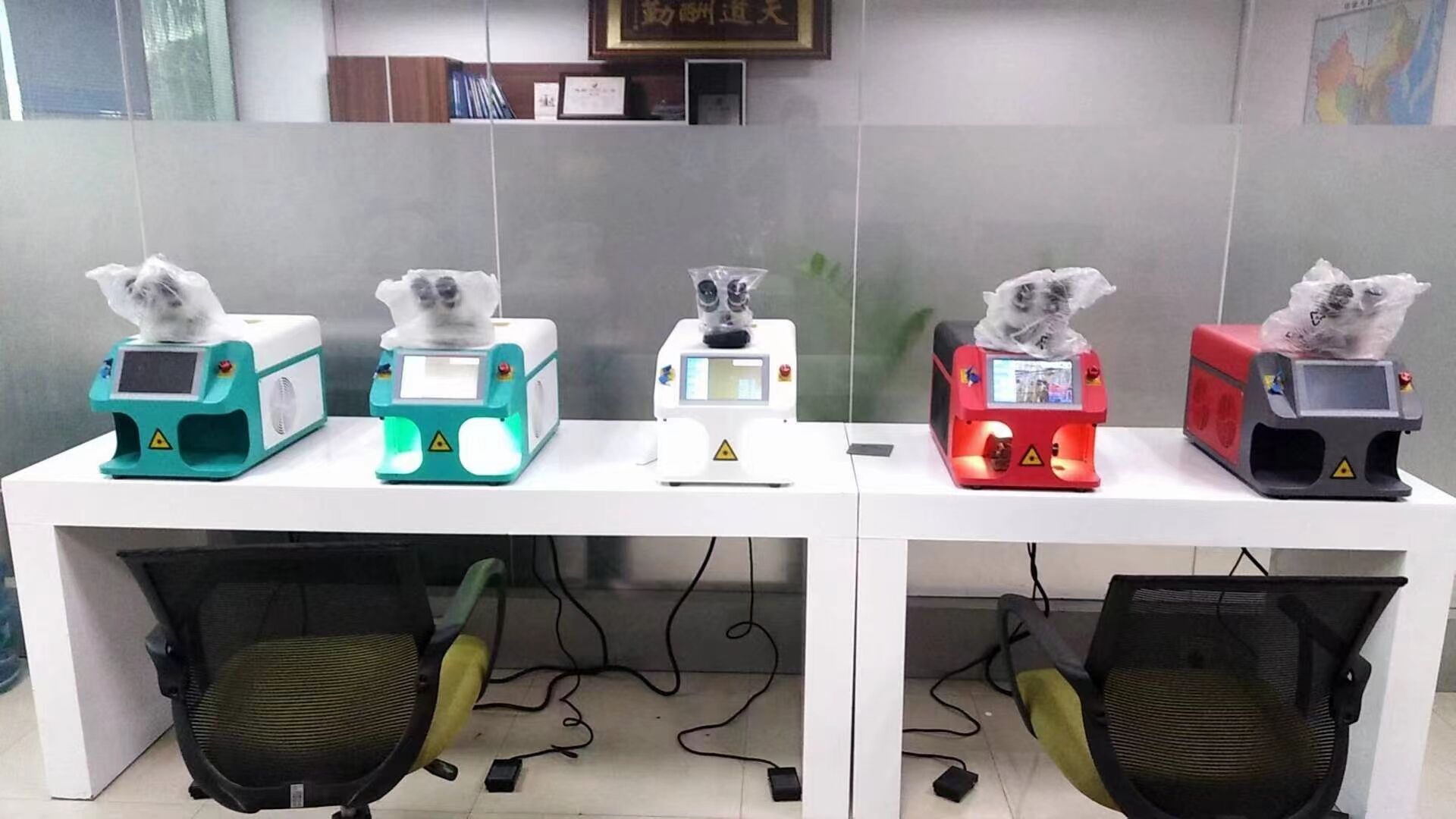
Application industry
Jewelry laser welding machine can be used to fill porosity, re-tip platinum or gold prong settings, repair bezel settings, repair/resize rings and bracelets without removing stones and correct manufacturing defects. Laser welding reconfigures the molecular structure of either similar or dissimilar metals at the point of welding, allowing the two common alloys to become one.
|
Widely applicable to all kinds of micro parts of precision welding |
such as: Jewelry, electronics, watches. |
Company Profile
Demark (Wuhan) Technology Co., Ltd Is A High-Tech Enterprise Focusing On The Research And Development, Production, Sales And Service Of Fiber Laser Equipment. Lt Is Headquartered In Wuhan Optics Valley, The Birthplace Of Laser Technology In China.Relying On The Solid Scientific Research Strength Of Huazhong University Of Science And Technology, The Company Has Mastered A Number Of Core Technologies In Laser Cutting,Welding, Cleaning And Marking Through More Than 20 Years Of Exploration And Accumulation,And Has More Than 60 Patent Protections.
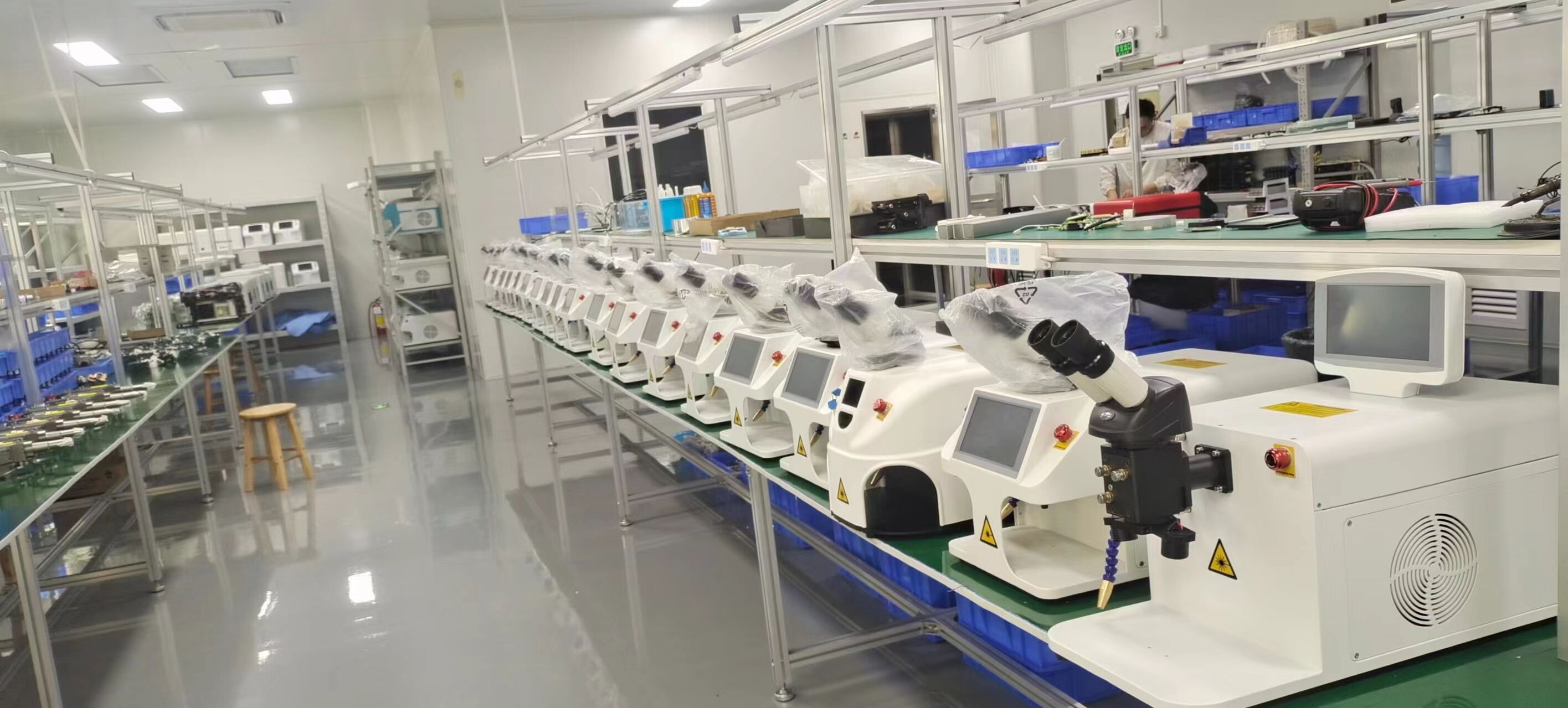
FAQ
Q: What maintenance is required for a Jewelry Laser Welding Machine?
A: Maintenance requirements vary depending on the model and usage of the Jewelry Laser Welding Machine. Generally, regular cleaning and inspection of the machine's components is recommended to ensure its proper functioning. Additionally, some machines may require periodic replacement of certain parts, such as flash lamps or laser tubes.
Q: Can a Jewelry Laser Welding Machine be used for engraving or marking jewelry?
A: Some Jewelry Laser Welding Machines may have the capability to engrave or mark jewelry, but it is not their primary function. For engraving or marking, a dedicated laser engraving or marking machine would be more appropriate.
Q: How long does it take to learn how to use a Jewelry Laser Welding Machine?
A: Learning how to use a Jewelry Laser Welding Machine can vary depending on the individual and their level of experience with welding and metalworking. With proper training and practice, beginners can usually become proficient in a few weeks.
Q: Can a Jewelry Laser Welding Machine be used on all types of jewelry?
A: While a Jewelry Laser Welding Machine can be used on a wide range of jewelry materials, there may be some materials or designs that are not suitable for laser welding. It is important to consult with an experienced jewelry technician or manufacturer to determine the best approach for your specific project.
Q: Are there any limitations to the size or shape of jewelry that can be welded with a Jewelry Laser Welding Machine?
A: The size and shape of the jewelry that can be welded with a Jewelry Laser Welding Machine may be limited by the size and shape of the machine's welding chamber or by the positioning and movement of the jewelry during welding. It is important to choose a machine with an appropriate size and shape for your specific needs.
Q: Can a Jewelry Laser Welding Machine be used to repair gemstones or other non-metal components of jewelry?
A: No, a Jewelry Laser Welding Machine is not designed to repair or work on non-metal components of jewelry, such as gemstones or beads. These components may be damaged or destroyed by the high heat of the laser welding process.
Q: What is the difference between a Jewelry Laser Welding Machine and a traditional soldering iron or torch?
A: A Jewelry Laser Welding Machine uses a high-energy laser beam to melt and weld metal pieces together, while a traditional soldering iron or torch uses heat to melt and join metal. Laser welding allows for more precise and controlled welds, minimal heat affected zone, and the ability to weld difficult-to-reach areas.

 EN
EN
 AR
AR CS
CS NL
NL FR
FR DE
DE IT
IT JA
JA KO
KO PL
PL PT
PT RU
RU ES
ES UK
UK TH
TH TR
TR
